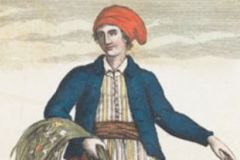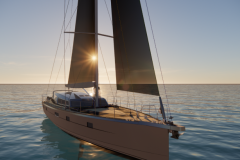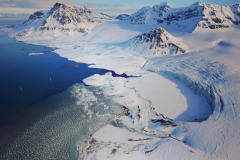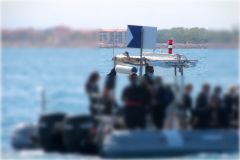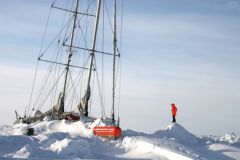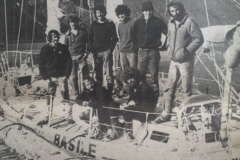Rough conditions and complicated arrivals
After 5 days of sailing from the Gambiers, the crew of the Why arrived in the Austral Islands, on the island of Raivavae. After a trip in rough conditions with 30 to 35 knots of wind and 4 m high waves, but which allowed them to reach a top speed of 13 knots, the finish was just as strong.
The crew of the Why is mainly composed of divers, less experienced in sailing maneuvers. Between the arrival at night and the cards that did not match, vigilance was required for everyone.
An island different from the Polynesian islands
Raivavae is an island in the Southern Archipelago of French Polynesia. Located at the southernmost point of all the islands visited by the expedition, it offers an incredible panorama: large spectacular mountains and fresh water for Polynesia.
If its geography is different, so are its seabeds. Here, the slopes are rather gentle and the relief is quite marked with pinnacles, cavities and canyons.
Well prepared dives
In this episode, we discover how the team prepares itself before each dive. A briefing of several minutes explains the missions and gives safety instructions. Underwater, time is limited and handling is numerous, so it is important to be well organized beforehand.
At Raivavae, dives will be reduced by 30 minutes and clothing adapted to the freshness of the water, for more comfort and safety.
It is at 5 on a Poti marara Polynesian fishing boat that divers go to discover the southern depths. We discover in video the necessary equipment and the steps of coral sampling.
And it is while performing their decompression stops that divers take samples at different depths.
Encouraging results
After 10 months of work, the Under The Pole team is still able to discover new deep species. A species never seen before in French Polynesia.
Then move on to the scientific part with two researchers from the Criobe who study the underwater photos taken, sample pieces with a genetic vocation and list the specimens for the collection.
These dives make it possible both to carry out an inventory of diversity according to depths, but above all to try to understand how corals can descend so low and compensate for the lack of light, one of the determining factors for their survival.
After work, leisure time
During stopovers, the team also takes time to relax. This is how Ghislain, Emmanuelle and their two children discovered the motu swimming pool, with its very clear water and immaculate white sand.
Next destination
The next step will be Tahiti, after a 2/3 day sailing, for a technical stopover. This will be followed by Macatea, the last step of the Deep Hope program.




